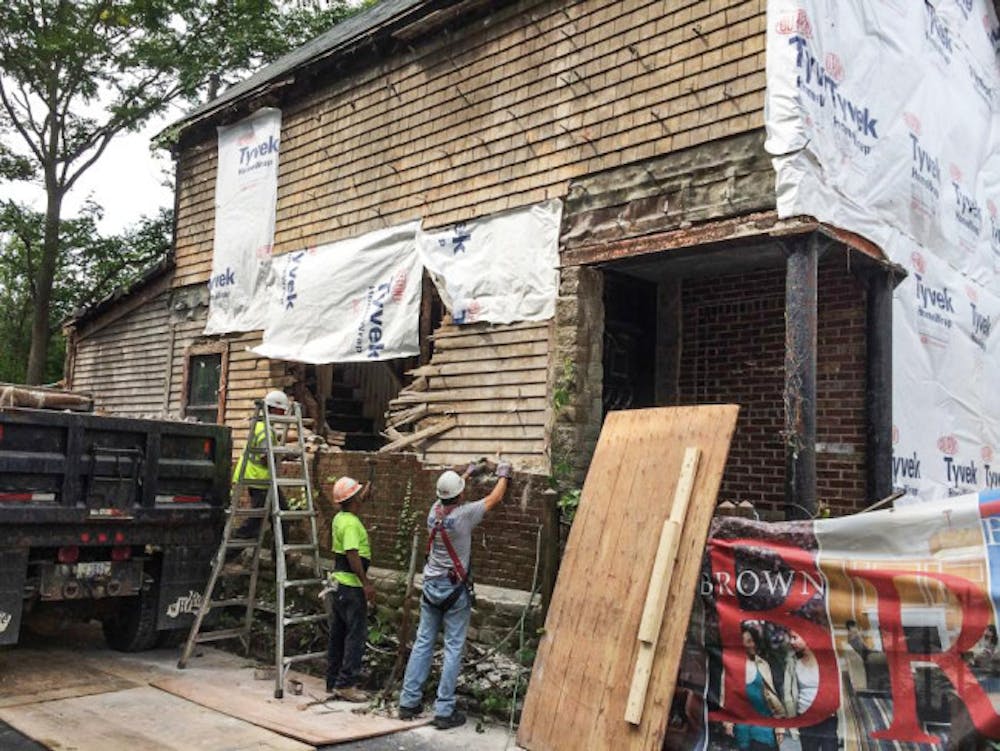In September, the Providence City Council passed a resolution calling for the removal of Confederate flags and monuments from public property. The measure was a good-faith effort to show solidarity with marginalized communities after the horrifying events in Charlottesville this summer — but it didn’t exactly catalyze groundbreaking change. Providence, a northern city staunchly in Union territory, isn’t particularly awash with Confederate symbols. Yet Providence and Rhode Island still retain symbols that glorify another aspect of America’s troubled past: the slave trade. Unfortunately, many of these monuments and signs have lived on unchallenged — until recently.
On Monday, the Providence City Council’s Urban Redevelopment Committee unanimously passed a resolution to recast Magee Street — named after the slave trader William F. Megee — as Bannister Street, in honor of the 19th-century African-American activists Edward and Christina Bannister. Though the move still has to be officially approved by the council, it has been largely met with support from the community, and with good reason: The Bannisters were truly inspirational people who championed minority rights in Rhode Island and worked to improve the entire community. Edward Bannister was a renowned painter who was once honored as the “Best Artist in America,” while Christiana was a prominent businesswoman and civic leader at a time when women of color were often silenced and forgotten. It could not be more fitting that their names are replacing Megee’s on the street signs that line the roads they once traversed.
However, many other remnants of the state’s unsavory past still surround us. While Rhode Island’s prominence in the slave trade has often been brushed under the rug, in reality the state was a focal point of the industry for years. Brown, named after a family that was heavily involved with the slave trade, is a prime example of this; University Hall was even partially built by enslaved people in 1770 . To its credit, the University is actively working to address its past through initiatives such as the Center for the Study of Slavery and Justice and the Slavery Memorial on the Quiet Green. But other mementos on the state’s public land, including a statue of Christopher Columbus at the corner of Elmwood and Reservoir avenues, remain uncontextualized — testaments to Rhode Island’s links to a darker past.
And if we need more evidence, we need only look at our state’s full name: “The State of Rhode Island and Providence Plantations.” The term “plantations” indisputably conjures up images of slavery and the Confederacy — images that many other states and institutions have actively tried to move away from. A similar question engulfed Cornell’s gardens — originally termed the Cornell Plantations — in 2016, with the university eventually deciding to change the name in response to student concerns. Though there have been several attempts to officially change Rhode Island’s name — most recently in 2010 — state residents have generally opposed the rebranding.
In light of this history, I applaud the Urban Redevelopment Committee for taking action to rename Magee Street and hope the entire council takes up this charge when the resolution comes to vote Nov. 16. But Providence’s attempts to address its historical ties to slavery should not just end with this one vote on this one street: The city should continue to find ways to contextualize its past and recognize the diverse communities that have long called it home.
Let me be clear: I am not saying that Providence should tear down or recast every monument constructed during the 18th-century, when the state’s role in the slave trade was at its peak. But there are many ways for the city and state to acknowledge their histories. On this, they can take cues from other cities that have faced similar questions and started to institute change. While New Orleans and Charlottesville, for instance, have announced that they are removing all monuments relating to the Confederacy, Richmond has decided to add plaques explaining their historical context and additional monuments commemorating those who were enslaved. Though some have argued that this is not enough, it is clearly a step forward from leaving these troubling monuments and symbols untouched.
There is much more Rhode Island and Providence can do to take a clear stand in support of their marginalized communities. But in the meantime, renaming Magee Street to Bannister Street is a well-intentioned start.
Mili Mitra ’18 can be reached at mili_mitra@brown.edu. Please send responses to this opinion to letters@browndailyherald.com and other op-eds to opinions@browndailyherald.com.



